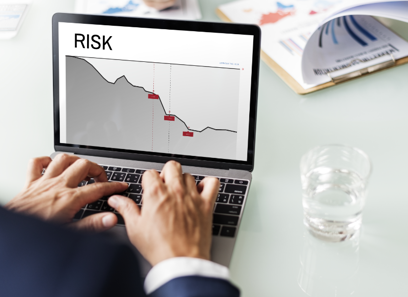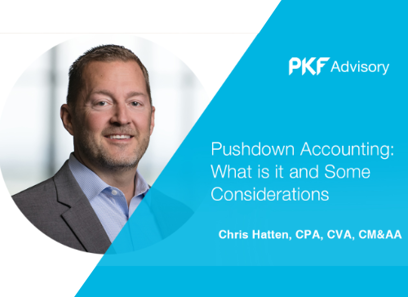Why Every Company Demands a Solid Cybersecurity Advisory 2025 Technique
In 2025, organizations face a quickly advancing cyber risk landscape. The elegance of attacks, driven by developments in innovation, necessitates a solid cybersecurity advisory strategy. This strategy not only improves risk assessment however likewise cultivates a society of safety recognition amongst employees. As essential facilities becomes increasingly prone, the demand for aggressive procedures becomes clear. What steps should companies require to ensure their defenses are robust enough to hold up against these obstacles?
The Evolving Cyber Danger Landscape
As cyber threats proceed to progress, companies have to stay alert in adjusting their protection actions. The landscape of cyber threats is marked by boosting elegance, with enemies employing advanced strategies such as expert system and artificial intelligence to manipulate susceptabilities. Ransomware assaults have risen, targeting essential infrastructure and demanding substantial ransom money, while phishing systems have ended up being extra deceitful, usually bypassing traditional safety procedures.
In addition, the increase of the Internet of Points (IoT) has actually increased the assault surface, providing brand-new entry factors for cybercriminals. Organizations face challenges not just from exterior risks yet likewise from expert risks, as employees may accidentally jeopardize sensitive information. To effectively combat these progressing hazards, businesses must focus on positive techniques, consisting of normal updates to their safety infrastructure and constant worker training. By remaining notified about the current patterns in cyber dangers, organizations can better guard their properties and preserve resilience in a progressively aggressive electronic environment.
The Significance of Danger Evaluation
Comprehending the importance of danger evaluation is critical for organizations aiming to fortify their cybersecurity pose. A thorough risk assessment determines susceptabilities and potential dangers, making it possible for organizations to prioritize their sources successfully. By reviewing the likelihood and effect of different cyber risks, companies can make informed choices regarding their protection actions.
In addition, danger evaluations help companies comprehend their compliance obligations and the legal implications of data breaches. They give understandings into the company's present safety and security practices and emphasize areas needing renovation. This proactive approach promotes a culture of protection understanding among staff members, urging them to acknowledge and report prospective threats.
Furthermore, carrying out regular threat evaluations makes sure that organizations stay dexterous in resolving arising dangers in the vibrant cyber landscape. Ultimately, a robust threat assessment process contributes in establishing a customized cybersecurity strategy that lines up with business objectives while safeguarding essential assets.
Positive Actions for Cyber Defense
Carrying out aggressive steps for cyber protection is essential for companies looking for to alleviate potential risks before they rise. An extensive cybersecurity approach must consist of normal susceptability assessments and penetration testing to determine weak points in systems. By performing these analyses, companies can address vulnerabilities prior to they are manipulated by destructive stars.
Additionally, continuous tracking of networks and systems is essential. This includes using advanced danger discovery technologies that can determine uncommon activity in real-time, enabling speedy reactions to potential breaches. Worker training on cybersecurity best techniques is vital, as human error typically provides substantial threats. Organizations needs to cultivate a culture of protection understanding, guaranteeing that employees understand their duty in securing sensitive information.
Developing an occurrence reaction plan enables companies to respond effectively to breaches, reducing damage and healing time. By executing these positive steps, organizations can dramatically improve their cyber defense posture and guard their electronic assets.
Enhancing Remote Job Security
While the change to remote work has offered flexibility and convenience, it has actually additionally introduced substantial cybersecurity obstacles that companies should address. To enhance remote job safety, companies require to execute robust protection procedures that safeguard delicate information. This includes using digital private networks (VPNs) to secure net connections, making certain that employees can access firm resources safely.
In addition, companies should mandate multi-factor verification (MFA) to include an added layer of security for remote gain access to - ERC Updates. Regular training sessions for staff members on identifying phishing efforts and keeping protected methods Home Page are additionally important
Companies must perform regular safety and security analyses to identify vulnerabilities in their remote work facilities. By taking on these techniques, companies can properly reduce dangers connected with remote job, protecting both their data and their reputation. Emphasizing a culture of cybersecurity understanding will certainly better encourage staff members to add to a safe remote workplace.
Leveraging Cloud Technologies Safely
A growing variety of companies are migrating to cloud technologies to boost functional effectiveness and scalability, however this shift likewise demands strict protection measures. Appropriately leveraging cloud solutions calls for a detailed understanding of potential susceptabilities and threats associated with shared settings. Organizations needs to execute solid accessibility controls, ensuring that just accredited employees can access delicate information. Encryption of data both in transportation and at remainder is important to securing information from unapproved accessibility.
Routine audits and surveillance can assist determine anomalies and possible dangers, enabling organizations to react proactively. Additionally, taking on a multi-cloud method can decrease dependence on a single company, potentially minimizing the influence of violations. Worker training on cloud safety and security ideal methods is important to cultivate a security-aware society. By integrating these actions into their cloud approach, organizations can harness the advantages of cloud technologies while mitigating protection risks successfully.
Keeping Customer Count On and Online Reputation
How can organizations make certain that customer count on and track record continue to be intact you could try this out in a progressively electronic landscape? To attain this, organizations should prioritize openness and aggressive communication. By clearly detailing their cybersecurity steps and immediately addressing any type of possible breaches, they can cultivate a culture of depend on. Consistently updating consumers regarding safety and security procedures and prospective threats demonstrates a dedication to protecting their data.
Additionally, organizations should purchase extensive cybersecurity training for employees, making sure that every person recognizes their function in shielding consumer details. Applying durable protection actions, such as multi-factor verification and security, more enhances the company's devotion to see this page preserving client trust fund.
In addition, celebration and acting upon consumer responses relating to safety techniques can strengthen relationships. By being receptive and adaptive to client problems, organizations not only protect their online reputation yet likewise boost their integrity in the market. Hence, a steady concentrate on cybersecurity is crucial for maintaining client trust fund.
Ensuring Regulatory Compliance and Legal Defense

A solid cybersecurity consultatory method helps organizations identify suitable regulations, such as GDPR, HIPAA, and CCPA, and execute needed measures to follow them. This strategy not only guarantees conformity but additionally enhances legal defense against possible breaches and misuse of information.
Additionally, companies can take advantage of routine audits and assessments to examine their cybersecurity posture and determine vulnerabilities. By cultivating a culture of conformity and continuous enhancement, businesses can alleviate threats and demonstrate their dedication to protecting delicate information. Eventually, buying a robust cybersecurity technique improves both governing conformity and lawful protection, protecting the company's future.
Regularly Asked Inquiries

Exactly How Can Organizations Identify Their Details Cybersecurity Requirements?
Organizations can recognize their specific cybersecurity demands by conducting danger analyses, assessing existing security procedures, assessing prospective threats, and engaging with stakeholders to recognize vulnerabilities, ultimately producing a customized technique to attend to unique difficulties.
What Budget plan Should Be Alloted for Cybersecurity Advisory Services?

How Frequently Should Cybersecurity Strategies Be Upgraded?
Cybersecurity techniques should be upgraded a minimum of yearly, along with after considerable events or changes in innovation (ERC Updates). Normal testimonials make certain efficiency against progressing threats and conformity with regulative requirements, keeping organizational strength versus cyber threats
What Qualifications Should a Cybersecurity Advisor Possess?
A cybersecurity consultant need to have relevant certifications, such as copyright or CISM, comprehensive experience in threat monitoring, knowledge of conformity laws, strong analytical skills, and the capacity to communicate intricate ideas effectively to varied audiences.
Exactly How Can Organizations Gauge the Effectiveness of Their Cybersecurity Method?
Organizations can determine the performance of their cybersecurity technique with routine audits, keeping an eye on case feedback times, examining risk intelligence, conducting staff member training evaluations, and reviewing compliance with industry standards and regulations to ensure continuous improvement.